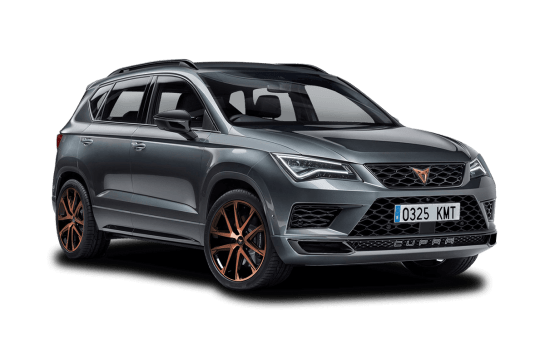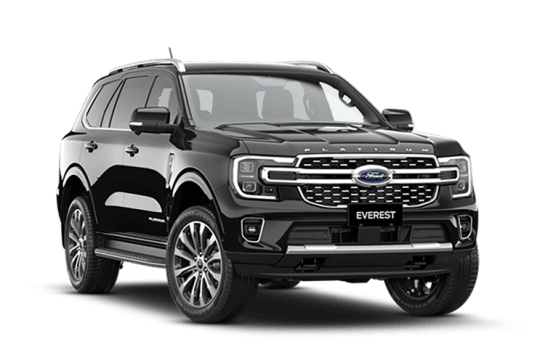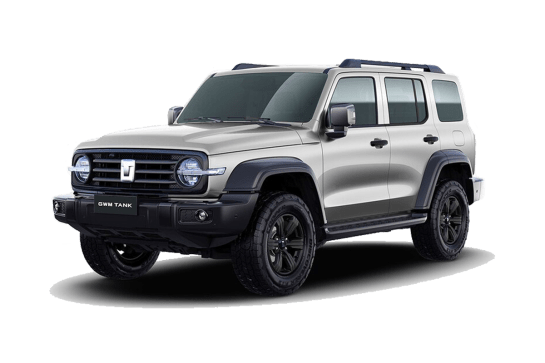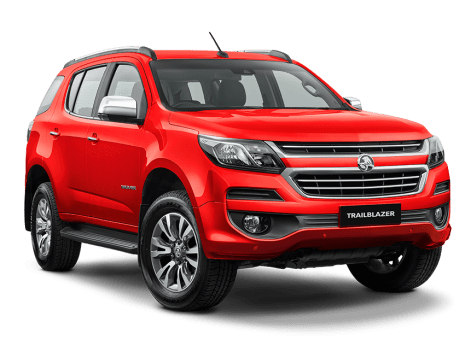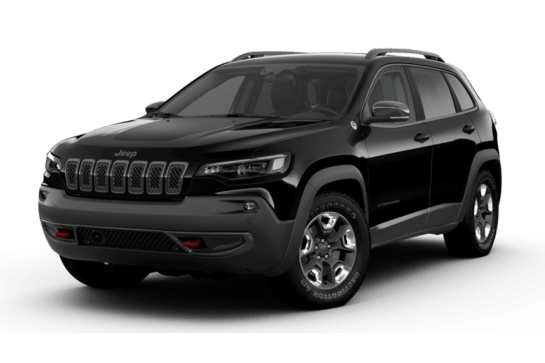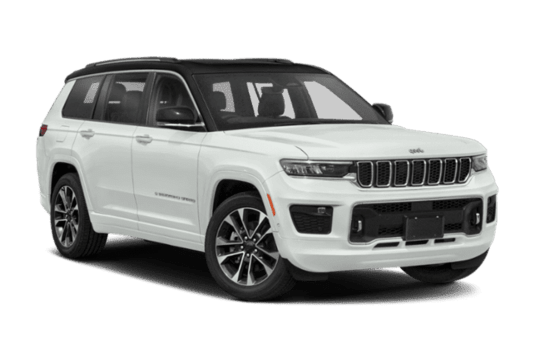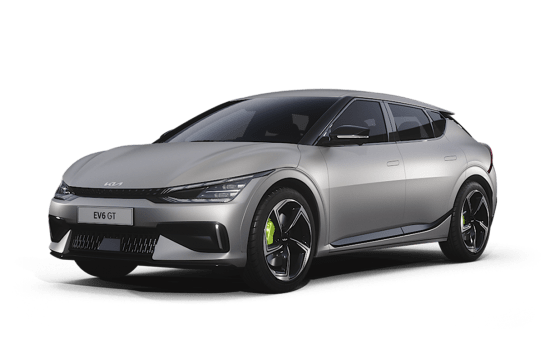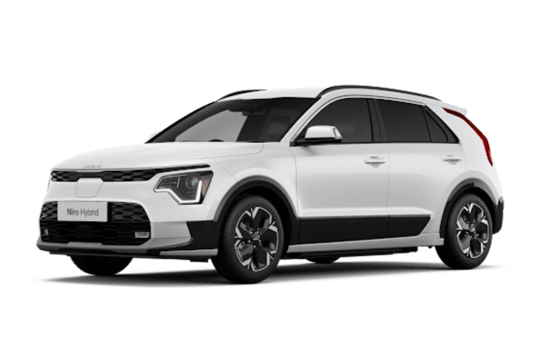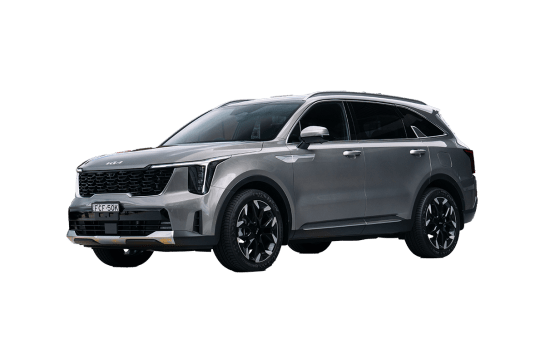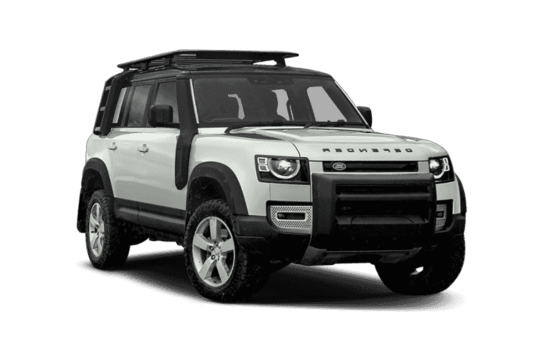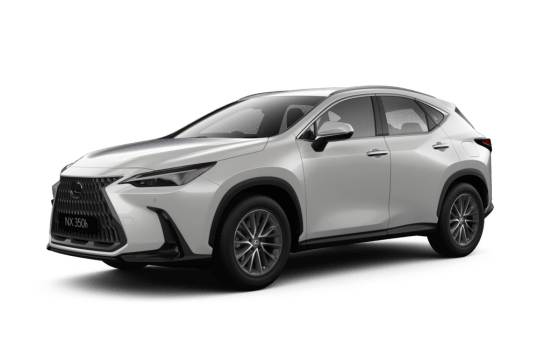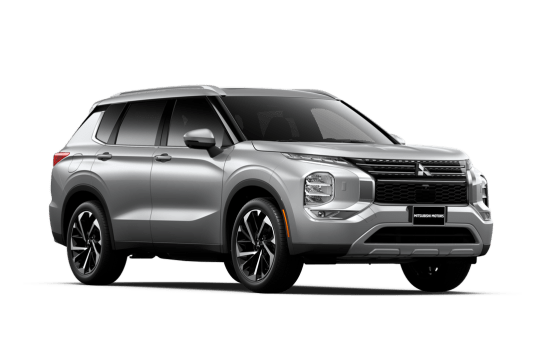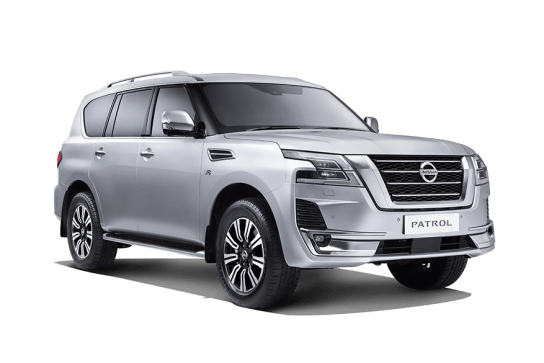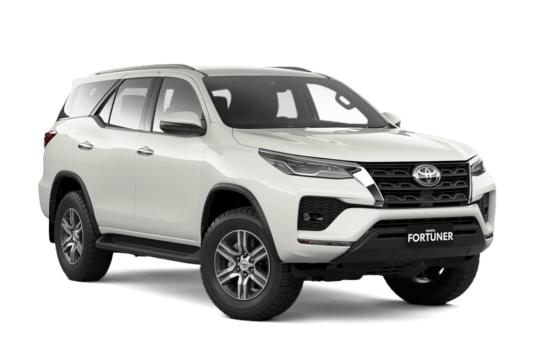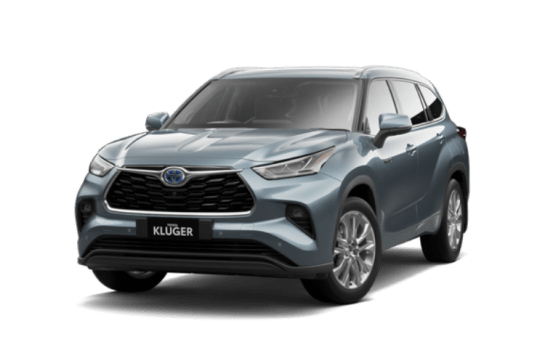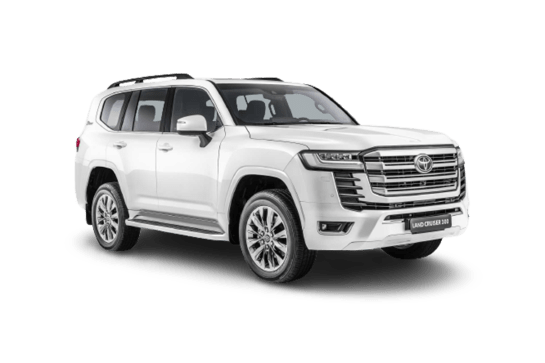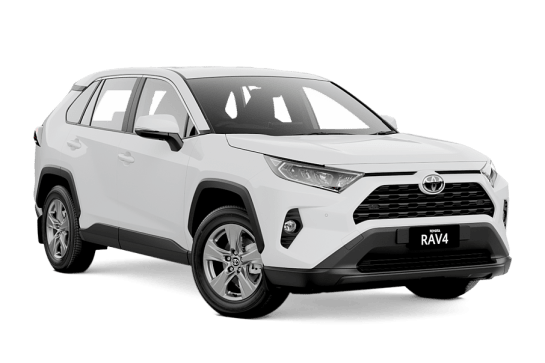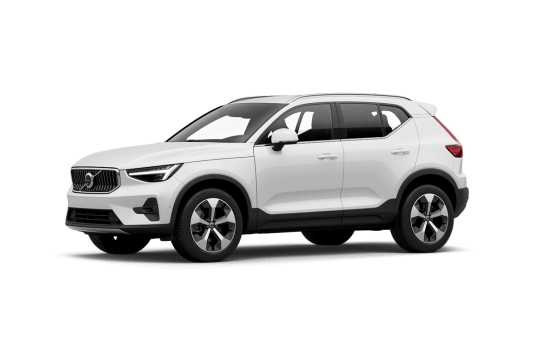
Mitsubishi Pajero VS Toyota Fortuner
Mitsubishi Pajero
Likes
Dislikes
Toyota Fortuner
Likes
- Capable 4WD
- Rugged build
- Function over fashion
Dislikes
- Feels old
- Lacklustre performance
- Driver-assist tech needs work
Summary
Mitsubishi Pajero
Mitsubishi’s Pajero is a genuine seven-seater 4WD wagon with a lot of substance and little in the way of pretence.
It’s functional without being at all flashy and that suits plenty of people – real people – but the Pajero’s traditional styling and paucity of driver-assist tech, compared to some of its rivals, are factors enough when combined to keep its fanbase, only medium-sized but still very loyal.
Read on.
| Safety rating | |
|---|---|
| Engine Type | 3.2L turbo |
| Fuel Type | Diesel |
| Fuel Efficiency | 9.1L/100km |
| Seating | 7 seats |
Toyota Fortuner
The Toyota Fortuner has been around since 2015 with very few significant changes in the years between then and now.
And that’s telling because the HiLux-based Fortuner has never managed to make the mark in its market segment that Toyota would so dearly like it to.
With a new Fortuner possibly due in the not-too-distant future – with Toyota’s mild-hybrid 48V V-Active system onboard perhaps? – it’s worth revisiting the seven-seat Fortuner to see how the current ageing 4WD wagon stands up against its fresher rivals.
Read more about
- Toyota LandCruiser Prado 2025 review: Altitude
- First look at new 2026 Toyota HiLux: Has Toyota done enough to beat Ford Ranger, Isuzu D-Max, Mitsubishi Triton, BYD Shark 6 and Kia Tasman? Report
- 'Toyota got it exactly right': Sluggish electric car growth in Australia shows Toyota's hybrid-first strategy the right path as sales of Toyota RAV4, Corolla Cross, Corolla and Kluger hybrids boom
Read on.
| Safety rating | |
|---|---|
| Engine Type | 2.8L turbo |
| Fuel Type | Diesel |
| Fuel Efficiency | 7.6L/100km |
| Seating | 7 seats |
Verdict
Mitsubishi Pajero7/10
The Pajero is an old-style 4WD with plenty of heart but sorely lacking safety tech, including stuff like AEB, that’s offered in much cheaper vehicles. Its engine is a bit gruff, its ride is a bit firm and its price-tag seems steep for something so out of step with the current 4WD wagon market.
It is, however, a solid all-rounder: it’s a good daily driver, a decent off-road tourer and it makes a solid towing platform. The Pajero is not flashy or overly stylised – and that’s part of its simple charm. Plus there are heaps of accessories for it including alloy nudge bar, Thule luggage pod, roof-rack cross bars, Thule bike carrier and more.
If it was cheaper, and had more safety tech, it would be a more appealing buying proposition.
Toyota Fortuner 7/10
The Toyota Fortuner is a family friendly wagon and a very capable 4WD, but it’s looking and feeling decidedly old, especially when cross-shopped against the current highly competitive 4WD wagon market in which vehicles are increasingly stylish, sophisticated and packed with driver-assist tech (that isn't clunky) and standard features (that are extensive).
The Fortuner is practical and easy to live with as a daily driver, and in GXL spec it makes a lot of sense as a functional not flashy off-road tourer, but it’s far from the best family 4WD wagon around.
Until a next-generation Fortuner possibly arrives, there are plenty of Toyota fans who’d happily settle for a current Fortuner – if they haven’t already.
Design
Mitsubishi Pajero
It’s still a chunky-looking vehicle, with hard edges and a straight-up-and-down appearance, which is fine, I reckon. It manages to narrowly avoid a generic SUV-look.
The interior is a family-friendly space with plenty of room, simple clean lines, and durable surfaces.
Toyota Fortuner
The GXL is 4795mm long with a 2745mm wheelbase. It is 1855mm wide, 1835mm high and has a listed kerb weight of 2185kg. It has a 11.6m turning circle.
Not a lot has changed in terms of the Fortuner’s looks over the years and while it stubbornly retains that pleasingly non-offensive exterior of most modern SUVs, it does manage to not be totally bland.
The GXL is a body-on-frame 4WD based the HiLux, so it’s no sports car in appearance whether you gaze at it from the front, side, rear or from a bird’s eye view, but it doesn’t look like a block of rotten wood, so unless you’re looks-obsessed, then you should be okay driving this around.
The Fortuner interior is looking dated and the standard dark grey fabric cloth seats, though well-suited to coping with day-to-day messes and spills, don’t do the cabin any favours either, and – you know what? – I don’t mind any of it. Note our test vehicle on this occasion had black leather-accented seats as part of its GXL Option Pack, but I've spent time in cloth-seat Fortuners.
Practicality
Mitsubishi Pajero
The Pajero is easy to get in and out of. Even climbing into the third row, if you’ve been banished there, doesn’t require the dislocation of your own limbs, or the need to adopt a posture not unlike something a yoga master might do in a tight space in order to drink his or her mug of piping-hot dirty chai.
Front-row seats are generally supportive but are on the firm rather than plush side of things. Durable plastic surfaces abound and the seats are covered in “sports cloth with leather-look bolster” (fabric seat trim with synthetic leather bolster in real words), which is all nice-looking enough and able to cope with life’s messiness – yes, I’m talking about everyone’s kids.
The multimedia system is a workable unit with a clear 7.0-inch screen.
The dashboard and controls are still a bit old-school but it’s all easy enough to locate and operate.
The second row, a 60/40 split-fold arrangement, offers enough comfort and is easy to fold and push forward, or lock into place and slide forwards or backwards.
The third row isn’t terrible but it is quite firm.
Second- and third-row passengers get air vents.
As for storage options, driver and front passenger get cupholders between their seats, second-row passengers have a drop-down arm-rest incorporating two cupholders and third-row passengers get a cupholder each.
In terms of cargo room in general there is: 170 litres (with all seats in use); 846-litres (with third-row seats folded away); 1429-litres (with second- and thirds-row seats folded away). There is a listed maximum capacity of 1789-litres (but that’s if the second- and third-row seats are folded away and you pack to the ceiling.)
There are four tie-downs on the floor at each corner of the rear cargo area.
Toyota Fortuner
The Fortuner’s cabin has a comfortably familiar feel to it and, thankfully, this interior is all about function not fashion.
It’s a practical space, with standard cloth seats (as mentioned our test vehicle has the Option Pack leather-accented seats, but I’ve spent enough drive time in Fortuners with cloth seats to know how those cope with the mess and dirt of everyday life), carpet floors with rubber mats, and durable plastic surfaces everywhere.
Up front, there’s an 8.0-inch multimedia screen (too small, not clear and bright enough) and that system has USB-connected Apple CarPlay and Android Auto (no wireless anything), and a 4.2-inch colour driver’s display, which is too small, too basic and part of an outdated mix of analogue and not-new-enough digital instrumentation.
There are the usual storage spaces – including a glovebox, a centre console, a tray for your smartphone, pop-out cup-holders on the outboard edges of the dash – and a USB port and a 12V socket for charging purposes.
The Fortuner’s three rows are in a 2-3-2 seat configuration. The 60/40 split-fold second-row seat has a one-touch, tumble feature. The 50/50 third-row seats are able to be stowed away, sort of. When folded to each side they protrude into the load space, reducing the size of what would otherwise be a more useable cargo area.
It’s reasonably comfortable in the second row; I sat behind my driving position and I had adequate head and knee room.
The second row has cup holders in the fold-down armrest, ceiling-mounted controls for the aircon, and two ISOFIX and three top-tether anchor points.
All three rows get aircon – with ceiling-mounted vents – and there are a few storage spaces in the third row, but no cup-holders.
In terms of comfort, it’s ordinary back here; the seats are flat and unsupportive – and, for anyone other than children, the space is tight.
Boot space is listed as 200 litres with the third-row seats in use, and in that area there are cargo hooks and a 12V socket.
Stow away the third-row and cargo space increases to 716 litres. But the seats still jut into the cargo area, greatly reducing your actual useable load space, and they also obscure a lot of driver vision to the rear.
With the second and third rows out of the way you have a listed 1080L of cargo area.
Price and features
Mitsubishi Pajero
The Exceed has gone and the GLS is now the top-tier buy of a two-variant range which includes the cheaper GLX.
The current drive-away offer for 2020 Mitsubishi Pajero GLS is $56,990. Beyond all of the standard GLS gear – including heated and powered front leather seats, leather-topped steering wheel, 7.0-inch colour touchscreen media unit (with Apple Car Play, Android Auto and Bluetooth), rear parking sensors, automatic wipers and headlights, 18-inch wheels, and cargo blind – the GLS gets a Rockford Acoustic Design premium sound system with 12 surround-sound speakers and an integrated 10-inch subwoofer. The system has HDMI, two USB inputs and AM/FM/DAB radio.
Of course, in terms of off-road gear, you also get Mitsubishi's Super Select II 4WD system, as well as centre and rear diff-locks.
Toyota Fortuner
Our test vehicle is the GXL, the mid-spec variant in a line-up topped and tailed by the base-spec GX and the top-shelf Crusade.
The GXL has a starting price of $58,895 plus on-road costs.
Standard features onboard this seven-seat 4WD wagon include a 8.0-inch multimedia touchscreen (with Apple CarPlay and Android Auto), a six-speaker sound system, digital radio, manually adjustable seats and 17-inch alloy wheels.
Exterior paint choices include Glacier White (no extra cost) or premium paints Frosted White, Graphite, Stunning Silver, Eclipse Black, Feverish Red, Phantom Brown, and Saturn Blue, which all cost $675 extra.
Our test vehicle has the Option Pack, which includes black leather-accented seats and eight-way power-adjustable front seats.
Under the bonnet
Mitsubishi Pajero
The Pajero has a 3.2-litre four-cylinder turbo-diesel engine (141kW at 3800rpm and 441Nm at 2000rpm), teamed with a five-speed automatic transmission. The engine is gruff when pushed hard, but it’s very gutsy.
The Super Select II 4WD system, of which I’m a fan, is retained.
Toyota Fortuner
Every Fortuner in the line-up has a 2.8-litre four-cylinder turbo-diesel engine – producing 150kW and 500Nm – and that’s matched to a six-speed automatic transmission.
In terms of performance, the Fortuner is not going to set any hearts a-flutter: it’s sluggish off the mark, it takes a heavy right boot to make it feel like anything other than lacklustre on the move, and the six-speed auto downshifts quite harshly at times, especially when going up or down long, gradual inclines on the highway.
However, the 4WD set-up is effective, with adequate low-range gearing, a quietly efficient (but a tad clunky) off-road traction control system, and a rear diff lock.
Efficiency
Mitsubishi Pajero
Fuel consumption is listed as 9.1L/100km (combined). We recorded 10.35L/100km after 640km of general driving, including about 30km of 4WDing (in high range) and about 10km of low-range 4WDing thrown into the mix. The Pajero has an 88-litre fuel tank.
Toyota Fortuner
The Fortuner has official fuel consumption of 7.6L/100km.
On this test I recorded 9.6L/100km.
Going by my on-test fuel figure, you could reasonably expect a driving range of about 833km from this Fortuner’s full 80-litre tank.
Driving
Mitsubishi Pajero
For a blocky seven-seater 4WD with a listed kerb weight of 2319kg, and at 4900mm long (with a 2780mm-long wheelbase), 1875mm wide and 1900mm high, the Pajero manages to get around rather nicely. It’s quick off the mark and agile and, with an 11.4m turning circle, the Pajero is easy enough to manoeuvre with precision on city streets.
Because the cabin is straight up and down and its glass areas are so prevalent, all-round visibility for the driver is tremendous, making it easy to position – and that translates into a direct advantage for off-road efficacy as well, which we’ll get to in a bit.
As mentioned, the engine is gutsy, with plenty of low-down urge and, matched with the five-speed auto (really, who needs more than five?), and if driven energetically this Mitsu is a lively drive on bitumen for such a substantial 4WD.
Speaking of 4WD, how’d it go off-road? I’m glad you asked – see below.
Toyota Fortuner
On-road, the Fortuner offers up a pretty standard driving experience for a ute-based wagon. It’s on the HiLux ladder-frame chassis, and it has a firm ride, bordering on harsh. Having said that, you do get used to it soon enough and the Fortuner's coil-spring suspension set-up takes most of the sting out of surface irregularities, except for the more severe dips and bumps.
The Fortuner’s driving position offers plenty of visibility – although the A-pillars are bulky and the third-row seats block vision to the rear when they’re folded up to the sides of the cabin.
This 4WD wagon is generally quiet, although there’s noticeable wind-rush noise around the wing mirrors and engine noise builds to a diesel shriek when you use a heavy right boot as is regularly required.
Steering – reach- and rake-adjustable – is adequately light and sharp, and the Fortuner, with its 11.6m turning circle, is reasonably nimble in suburban areas.
Acceleration, from a standing-start or for overtaking, is laggy but available power and torque come in handy during general driving, making the Fortuner more agreeable all-round than previous versions.
The six-speed auto is generally right for the job, but it downshifts harshly, especially when going up or down long, gradually sloping highway stretches. That happens enough for it to be on the wrong side of annoying.
Some aspects of the Fortuner’s driver-assist tech is annoying: active cruise control is too abrupt and pre-emptive, consistently miscalculating the space between the Fortuner and the vehicle in front as accurately as most of its rivals. This clunky application of tech to real-world scenarios works against the Fortuner.
While driving a lightly corrugated and rutted dirt track o the way to our set-piece off-road tests, the Fortuner’s ladder-frame chassis yielded a stiff, firm ride, bashing and bouncing over any and all surface imperfections. Airing down the Yokohama Geolandar ATs (265/65R17) from 38 psi (pounds per square inch) to 26 psi takes some sting out of the ride.
The Fortuner is a very capable 4WD with standard off-road measurements, including ground clearance (216mm), approach angle (29 degrees), departure angle (25 degrees) and rampover angle (23.5 degrees). It has a listed wading depth of 700mm.
The Fortuner’s switchable part-time 4WD system has two-wheel drive (H2), and high- (H4) and low-range (L4) four-wheel drive. There’s ample low-end torque on offer – on tap across a broad rev range – for controlled low-speed 4WDing and the unfussed turbo-diesel engine keeps the Fortuner ticking along, without any hassle.
Engine braking is good, keeping the Fortuner to a sustained and composed momentum on downhill runs.
The off-road traction control system is an effective set-up, limiting wheel-spin and sending much-needed torque to the tyres with some useable traction, with the aim to keep the vehicle moving along at a safe, controlled pace.
Besides that, the driver always has the option of engaging the rear diff lock for more traction action.
Wheel travel is decent for a wagon like this and if you can get the full suspension flex, and drop any mid-air tyres to the dirt for more traction, chances are you’ll be able to get moving along safely soon enough.
So, the mechanicals are fine – its 4WD set-up is very effective – but the Fortuner doesn’t have a whole lot of ground clearance (a claimed 216mm, standard for a contemporary 4WD wagon) and the side steps are prone to hitting on the edges of steep and deep ruts, but those factors are easily overcome through considered driving and tyres that are better suited to off-roading.
The standard Yokohama Geolandar AT tyres are somewhat of a flaw in the Fortuner’s off-roading set-up. Sure, they’re technically all-terrains, but I reckon a better bet for you – if you’re planning to drive anything beyond formed trails – is to invest in a set of more aggressive all-terrains with greater sidewall bite.
If you’re planning to use your Fortuner to tow anything, keep in mind that it has a 750kg unbraked towing capacity and 3100kg braked towing capacity. Remember: to be on the safe side, avoid going loading up to anywhere near those capacity figures.
Payload is 615kg (easily reached when you factor in people, pets, camping gear and more), gross vehicle is (GVM) is 2800kg, and gross combined mass (GCM) is 5900kg.
Safety
Mitsubishi Pajero
The Pajero has a five-star ANCAP rating as a result of testing in 2011. It has six airbags (driver and front passenger SRS airbags, driver and front passenger side SRS airbags, curtain SRS airbags), two ISOFIX points on the left and right second-row seats, three child restraint top tether points as well as emergency brake assist and a reversing camera, but it’s missing stuff like auto emergency braking and lane-departure warning.
Toyota Fortuner
The Toyota Fortuner GXL has the maximum five-star ANCAP safety rating from testing in 2019. Note the ANCAP safety rating for the Fortuner is based on crash tests of the Toyota Hilux.
Standard safety gear includes seven airbags and driver-assist tech, including AEB with pedestrian (night and day) and cyclist detection (day only), active cruise control, lane departure alert, road sign assist and more.
Ownership
Mitsubishi Pajero
The Pajero is covered by Mitsubishi’s five-year/100,000km warranty with five-year perforation corrosion cover.
Capped-price servicing is available for the vehicle's first three years (at $479 a pop, for a total cost of $1437). Service intervals are scheduled at 15,000km/12 months.
Toyota Fortuner
A five-year/unlimited kilometre warranty covers the Fortuner, which is par for the course these days.
If you stick to the relatively short servicing schedule – six months or 10,000km with at authorised dealerships – Toyota says it will cover the engine and driveline for up to seven years. All warranty elements are subject to terms and conditions, so make sure you’re fully aware of those.
Capped-price servicing applies and, for our test vehicle, it was $290 per appointment for the first five, then $377.38, $813.93, $572.55, $478.93 and $377.38.






